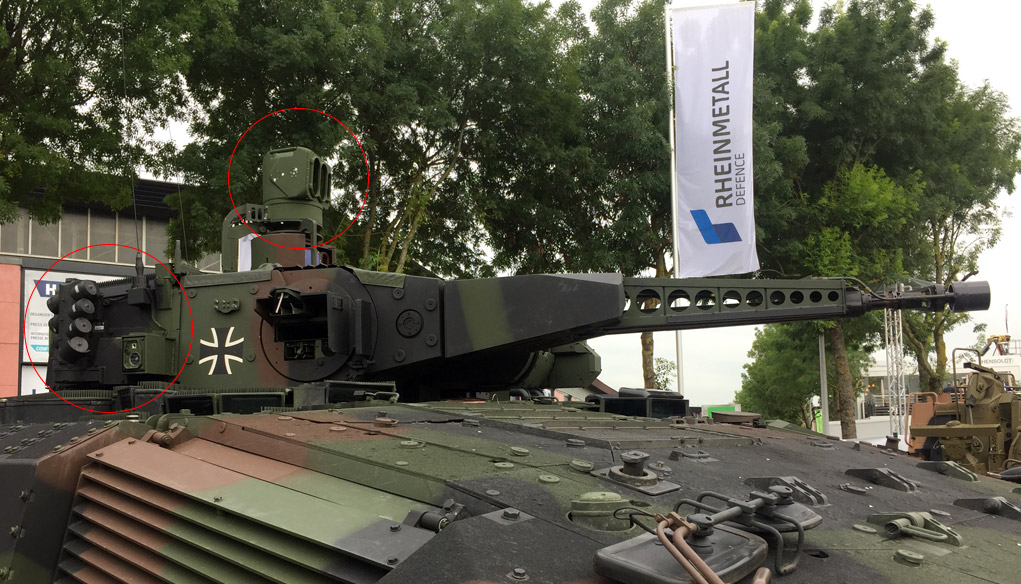The HENSOLDT company has delivered the 300th active protection system (soft kill) equipping the German Puma infantry fighting vehicle. In total, the company is under contract to deliver 342 MUSS equipment sets by 2020 to PSM, the vehicle manufacturing JV.
MUSS has also been selected for testing by the UK Defense Science & Technology Lab (DSTL) under the MEDUSA APS study, delivered by QinetiQ in the UK and Australia. In addition, MUSS was successfully integrated by BAE Systems onto its version for the British Army Challenger 2 MBT modernization capability and extensively trialed by serving British Army personnel during the Op User Trials.
Similar defensive aid systems (DAS) used on aircraft and helicopters, soft-kill APS such as MUSS increase the platform’s level of protection without adding significant weight. MUSS drastically reduces the likelihood of a hit by antitank guided missiles or laser-guided ammunition. It achieves a level of protection which is not possible for the same total weight with passive armor while avoiding collateral damage.




















